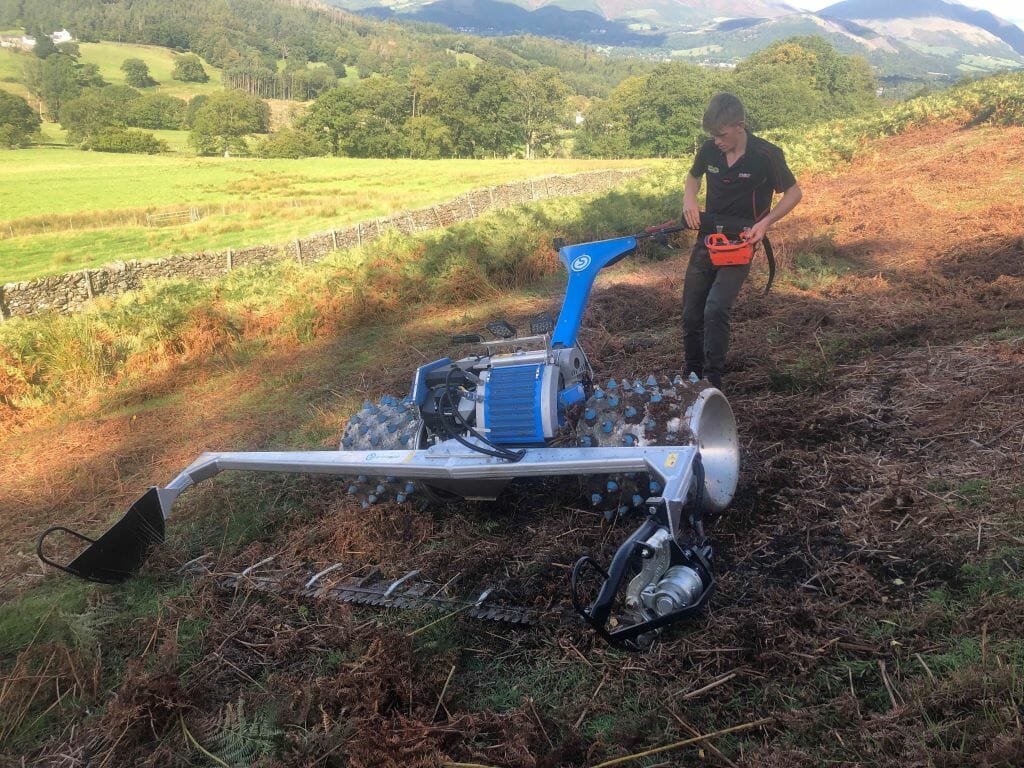
A new bracken cutter is helping to increase biodiversity and reduce grazing pressure on areas which are relatively easy for sheep to reach on Derwent Common, above Derwentwater.
A team from a project called Our Common Cause: Our Upland Commons are working with Natural England, commoners and the National Trust to employ the remotely controlled cutter to encourage wild flowers, reduce bracken prevalence and increase space for sheep to wander. This will lead to improvements in the condition the site of special scientific interest (SSSI).
Lakes project officer Alan Robinson said when unmanaged bracken becomes dense, the ground it covers was uninhabitable for sheep as well as grasses and wild flowers.
Alan said: “By opening up the thick bracken we are enabling the ground to come back to life and encouraging regrowth, while other harder to reach areas are being earmarked for tree planting, as and when appropriate.”
There are many benefits of the bracken cutting for the common, including managing public access and keeping footpaths clear, where bracken can dominate.
Alan added: “We’re really happy to see the cutter being used to its full advantage, working with a range of people to make best use of the machinery and seeing the benefits it is having to many people who use the common.”
Other initiatives supported by the Our Common Cause: Our Upland Commons project in Cumbria include a commons-proofed farm carbon calculator to record, manage and reduce their carbon footprint and a butterfly survey which revealed rare small pearl-bordered fritillaries, which landowners and commoners are being helped to protect.
Additionally, volunteers, led by archaeologists, have investigated England’s highest Roman road, High Street, to understand its construction and help it age better.
The three-year, £3 million Our Common Cause: Our Upland Commons initiative is set to end in the summer of next year.































